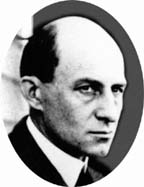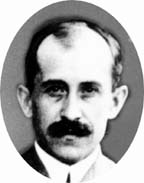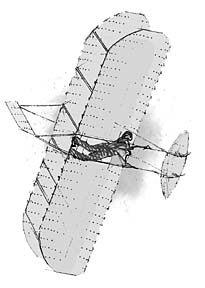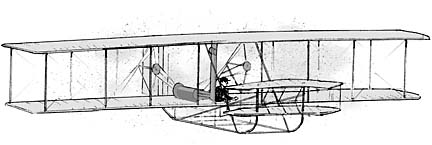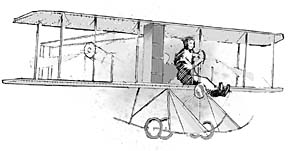
WINDWARD COMMUNITY COLLEGE
The Gallery 'Iolani at Windward Community College is hosting an exhibit on flight until Dec. 17.
‘The Wright Stuff’ exhibit
lands at Windward
Community CollegeThe display celebrates
the centennial of powered flight
and will run through Dec. 17
The Gallery 'Iolani at Windward Community College has been celebrating the centennial of powered flight in its own way since mid-November, with an exhibition entitled "The Wright Stuff," open from 1 to 5 p.m. Tuesdays through Sundays through Dec. 17.
Admission is free.
With the help of grants, the exhibit was put together by director Joseph Ciotti of the college's Windward Center for Aerospace Education, the gallery's Tony Martin and humanities department's Paul Fields.
The main gallery allows people to visit and browse through models of different aircraft, dating back from the Wright brothers up to today, Ciotti said, "as well as documents that shows things like a relic of the first aircraft to fly across the United States and the evolution of the U.S. airmail service.
"There are also hands-on kiosks to interact with," he said. "One of them is a historical computer kiosk, where you can select to see different events in aviation history. The other one is a 'hologram' image of someone portraying Amelia Earhart, describing how airplanes fly."
An adjoining activities room is set aside for children, where they can do puzzles and build paper airplanes.
The exhibit is also branches out to include the college's Hokulani Imaginarium, where a special DVD documentary on the Wright brothers will be presented at 7 p.m. Dec. 17, the centennial of the brothers' first successful powered flight. The La'akea Library also has a display of historical aviation books. The library is open 10 a.m. to 4 p.m. weekdays.
Tours of the Aerospace Exploration Lab and the NASA flight training simulator are also connected with "The Wright Stuff" exhibit.
Gallery 'Iolani is in the main lobby of the Palanakila Building at Windward Community College. For more information, call 236-9155.
BACK TO TOP |
Wilbur Wright
1867 ~ 1912
Orville Wright
1871 ~ 1948Getting it Wright
took timeDecember 17 marks 100 years of flight since 1903, when the Wright brothers flew the world's first airplane. The Wrights systematically built on the work of their predecessors, overcoming the problems of balanced flight and correcting the shape of the wing to maintain aerodynamic lift. With the addition of engine-turned propellers they successfully flew a self-propelled and heavier-than-air machine. The practiced skill with which they flew inspired the public imagination and infused a generation of pioneers.
1899: The Wrights built a kite to test their idea of warping wings to regain balance in flight. Modern aircraft with rigid wings use ailerons to control roll.
1900: The first full-sized glider had a 17-foot wingspan. The glider was flown along the North Carolina coast near Kitty Hawk where the winds were steady. The wing-warping was controlled from the ground with cables when flown unmanned.
1901: The larger 1901 glider did not remain in the air. Using a wind tunnel, built in their shop, with a fan and miniature models, the Wrights reconfigured the design of the glider's wing to achieve a better aerodynamic lift.
1902: The rudder and wing-warping were controlled by the pilot using a sliding hip cradle. The brothers made nearly a thousand glides with the new model that had a 32-foot, 1-inch wingspan.
1903: Having mastered flight with gliders, the Wrights turned their attention to powered flight. The Flyer I achieved the world's first flight, lasting 12 seconds -- one of four flights on Dec. 17.
1904: With Flyer II the brothers gained skill in maneuvering the powered airplane. However, the tendency to stall on turns persisted.
1905: The problem of stalling on turns was overcome simply by lowering the nose. With Flyer III, the world's first practical airplane was built. The Wrights had offered their Flyer II in January to the U.S. military and were turned down. An offer of the Flyer III was also turned down in October. From October 1905 to May 1908, the Wrights didn't fly. They worked with their designs, building several new aircraft called type A machines with improved engines. These had upright seating for the pilot and could hold one passenger.
1909: In September, a French client added wheels to the type A. The following January, the Wrights offered their customers fixed-wheeled undercarriages on their planes.
1910: The Model R was introduced as a competition aircraft that could fly at speeds of 50 mph to 80 mph, depending on the version. By 1911, European models were outperforming America's, even in U.S. competitions. The Wright Company went on to produce 11 models until 1916.
1911: The Wrights' "Vin Fiz," named after the soft drink sponsor, was the first aircraft to fly across the United States. It completed the flight in 84 days, having crashed five times.
BACK TO TOP |
A long flight
The 1903 Wright Flyer on display at the National Air and Space Museum contains "60 to 70 percent" of the original machine flown by Wilbur and Orville Wright at Kitty Hawk, N.C. The airplane only flew for less than 2,000 feet, but it traveled many thousands of miles before landing at the Smithsonian. Here are some of the key events in that journey:Dec. 17, 1903: The craft makes four flights, then is overturned by a wind gust and broken beyond repair at Kitty Hawk. The plane is dismantled and shipped back to Dayton, Ohio, where it remains in crates and is submerged in a 1913 flood.
May-June 1916: Four years after Wilbur's death, Orville and his assistants reassemble the flyer for the first time, and must almost entirely rebuild the rudder and forward elevators, repair some wing ribs and replace muslin fabric covering the center parts of wings.
1916-1924: The flyer is displayed at aeronautical exhibitions and meetings, and is assembled as evidence in a patent suit involving Wright-Martin Aircraft Co. in 1921.
1928: As a result of a long-standing dispute with officials at the Smithsonian Institution over proper credit for having made the first powered, controlled flight, Orville sends the flyer to the Science Museum in London.
1940: As World War II spreads across Europe, the craft is disassembled and stored in the museum basement to protect it from German bombers. It spends the duration of the war stored in a mine shaft in the west of England.
Dec. 8, 1943: Satisfied that the Smithsonian formally accepts the Wright brothers as the first to fly a powered craft, Orville signs documents to return the plane to the United States for display at the Smithsonian when hostilities cease.
1948: Less than 10 months after Orville's death, the plane is shipped to Washington and is presented to the Smithsonian on Dec. 17 by Milton Wright, a nephew of the inventors.
1975: The flyer is removed from the Arts and Industries Building and moved to the new National Air and Space Museum.
Source: Smithsonian Institution

